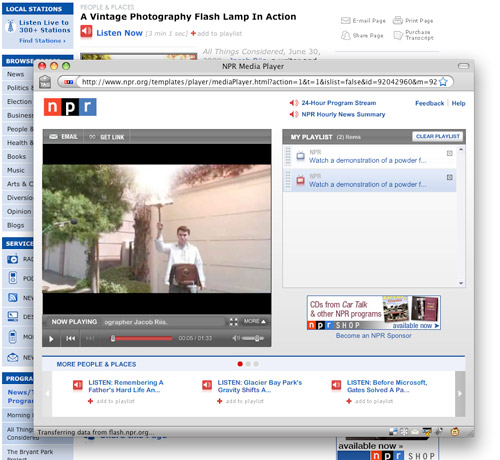Before flying last weekend to Washington D.C. for Public Media Camp 2010, I had trouble deciding which of the new TSA screening procedures would be worse.
-
nathangibbs Flying tomorrow. Can’t decide whether I want them looking at or touching the #junk.
Leaving San Diego was uneventful. There was no scanner at my checkpoint. They did do a quick pat-down of my upper body, but didn’t go below the belt. Leaving Dulles International Airport, I was diverted to a line that had the new scanners.
I decided to try both options. First, the scanner. Hands raised and feed spaced apart, I stood for my X-ray glamor shot. It was quick and silent. The agent directed me to step out and stand in line for pat-down. “Belt,” she said to the other agent. He asked me to remove it and to send it through the standard conveyor. He then told me he needed to check my waistline by running his fingers inside the belt line.
As I put my shoes on, I watched an older, pot-bellied gentleman get the more rigorous physical search. Standing behind the man, the agent spoke in his ear, “We can arrange a private room for screening if you would like.” He didn’t respond, so the agent knelt down to begin. The gentleman’s pants were falling down in absence of his belt, so the agent struggled to hoist them up. He checked up and down one leg, then hitched up the man’s sagging pants again. “Can you pull up your pants, sir?” The man obliged as well as he could with his curvature. It was sad to see this gray-haired traveler with his pants half off in a crowded airport. “He can’t hear out of one ear,” said the man’s wife.
After arriving in San Diego, Rosario and I headed to baggage claim. Yaoska Machado, a reporter for Univision San Diego, heard us speaking Spanish and asked Rosario where she was coming from. Rosario indicated I was the traveler so Yaoska directed her questions at me. She extended the mic and the videographer aimed his camera. I stumbled to answer her questions, suddenly nervous speaking Spanish on camera. But after the interview, I knew which clip she would use. It was the only usable sound byte I gave her.
